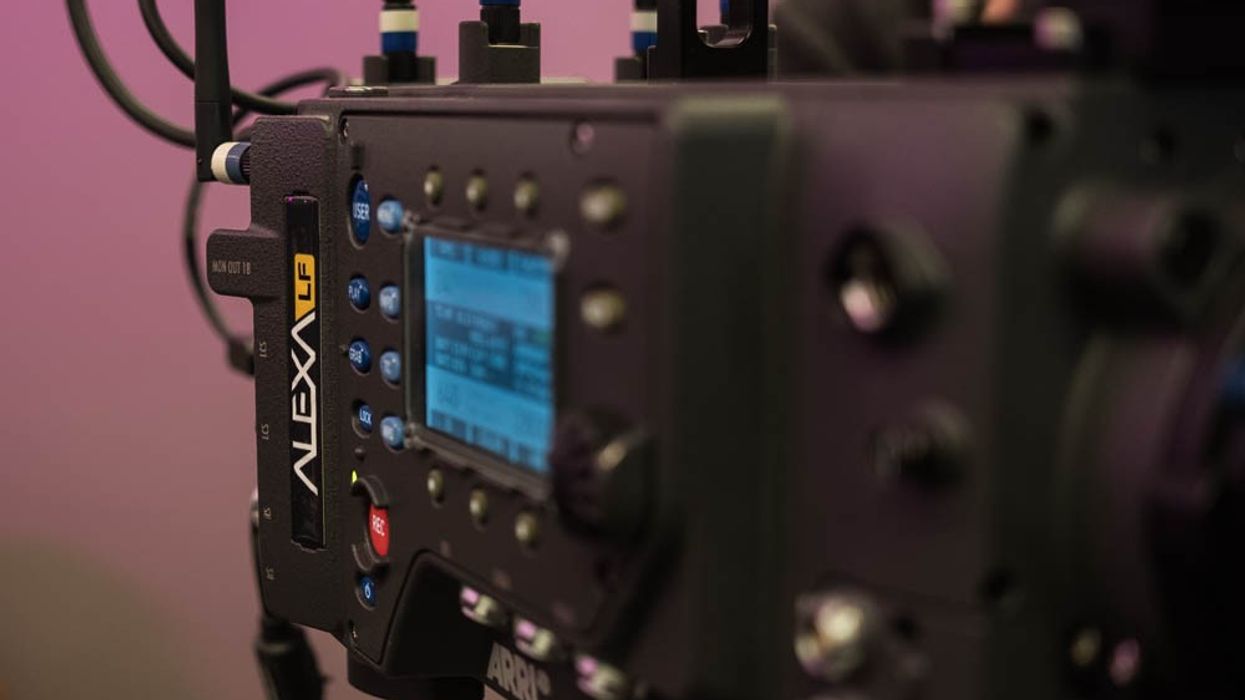Further Alexa LF Details Hit the Streets
Further details regarding the exciting new Alexa LF were released at an open house with AbelCine.

The announcing of the Alexa LF was big news when it was released a few weeks ago, and now ARRI has begun a roadshow to spread further technical details about the new camera body and lenses. It's also giving users a hands-on opportunity with the platform. Last weekend, rental house AbelCine held an open house in their new space in Brooklyn's Industry City, and reps from ARRI gave a presentation and showed-off some footage on perfectly calibrated Sony HDR monitors.

One detail we hadn't noticed on the Alexa 65 (and this goes for the Alexa LF as well) is that not only is the sensor just 2 normal ALEV sensors placed together, but you can actually see the seam when looking directly at the sensor. It doesn't come off amazingly in photographs, but it is clear to the naked eye and you can see the seam if you look carefully at these accompanying images. It goes without saying that the seam won't show up in your final imagery, but the image is made from those two sensors, and the next time we find ourselves around an Alexa 65, we'll be sure to take a look at the sensor.

We were also able to get our hands on a few of the ARRI Signature Primes (as well as view a price list, with individual lenses going for as much as $40k/each). While larger, the new LPL mount is, of course, similar to LP, but the large mount allows for a massive rear element that is visually striking. However, the lenses themselves were made from magnesium and, while physically larger than some competitive full frame primes, these felt surprisingly light, with many examples coming in around 2kg/4lbs.

Also covered were the improvements to the lens data system. Not only does the PL-to-LPL adapter pass through lens data (which is always appreciated), but the lens data system has been upgraded on the LF and signature primes and is now capable of capturing accurate focus/iris/zoom information of up to 150fps. Considering the increasing prevalence of slow motion work and need for lens data on VFX workflows, this is an appreciated improvement.

After interviewing users of the Alexa 65 system, ARRI discovered that many of them were only using the center area of the chip for most of their capture. Why? It lined up so well with existing full frame glass. While larger than full frame glass exists (and ARRI has several lines dedicated to covering the full Alexa 65 sensor), the center cut was so popular that they felt that they could make an LF sensor that covered that area while still happily servicing a large portion of their large format users.

In many ways, this makes the Alexa 65 feel more like the original D20 and D21 cameras that ARRI created before the full Alexa came out. Those were also rental-only (like the 65), used as test platforms to find out what people actually wanted from their Digital Cinema cameras. While we're confident that the Alexa 65 will continue to have certain applications, it seems likely that the ARRI LF is really the camera that will take off for most users. It has the same sensor size that "most users" used on the 65 with a body size only slightly larger than an SXT W, and it's designed to work with a much wider variety of lenses. Yes, you don't get 6K, but so what? If you want to buy it, you can actually buy it. ARRI is clearly more focused on volume and there will be more of them subsequently released as rental options.
For more info check out that ARRI LF site. Jon Fauers Film & Digital times has also done a downright exhaustive exploration of the Alexa LF that is worth a look.
Tech Specs
- 36.7 x 25.54mm maximum sensor size
- 4448x3096 maximum capture resolution
- 150fps possible in 2.39x1 4448x1856 ARRI Raw
- ALEV IIII Sensor
- A2X layout
- Brand new LPL lens mount
- Ships with LPL to PL adapter
- 44mm flange focal distance
- 12mm wider and longer than standard Alexa
- 2x 6G SDI and 1 1.5G SDI monitor outputs
- 16 bit linear image processing to Wide Gamut / Log C Space











